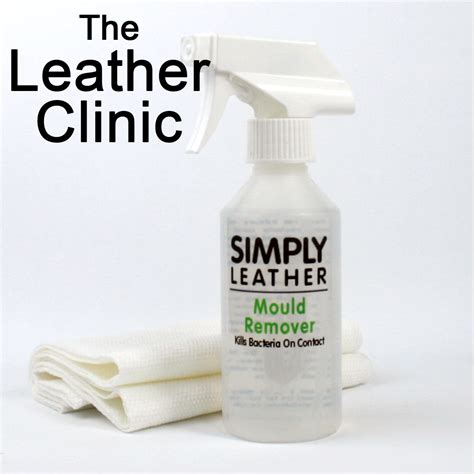The Best Products for Leather Mildew Removal: A Comprehensive Guide
Leather goods, from luxurious handbags to cherished jackets, are susceptible to mildew growth, especially in humid environments. Mildew not only spoils the aesthetic appeal but also damages the leather itself, potentially leading to irreversible deterioration. This comprehensive guide explores the best products for leather mildew removal, providing you with the knowledge and tools to effectively tackle this common problem and restore your valued leather items.
What Causes Mildew on Leather?
Before delving into solutions, it's crucial to understand the root cause. Mildew thrives in damp, dark conditions. Leaving leather items in poorly ventilated areas, storing them improperly after exposure to moisture (rain, sweat), or neglecting regular cleaning can all contribute to mildew growth. Identifying and addressing these underlying issues is vital in preventing future outbreaks.
Identifying Mildew on Leather
Mildew on leather typically presents as a fuzzy, powdery coating, often white or grayish-green. It might have a musty odor. Early detection is key, as mildew can penetrate deep into the leather fibers, making removal more challenging.
How to Remove Mildew from Leather: A Step-by-Step Guide
The approach to mildew removal depends on the severity of the infestation and the type of leather. Always test any cleaning solution on an inconspicuous area first to ensure it doesn't damage the leather.
1. Gentle Cleaning with Mild Soap and Water: For minor mildew, a gentle cleaning is often sufficient. Mix a small amount of mild, pH-neutral soap (like saddle soap) with lukewarm water. Use a soft cloth or sponge to gently wipe the affected area. Rinse with clean water and allow the leather to air dry completely in a well-ventilated, shaded area. Avoid direct sunlight, as it can fade the leather.
2. Using Commercial Leather Cleaners: Many specialized leather cleaners are formulated to remove mildew and other stains. Look for products explicitly designed for leather and follow the manufacturer's instructions carefully. Remember to test a small, inconspicuous area before applying it to the entire surface.
3. Isopropyl Alcohol (for Stubborn Mildew): For more stubborn mildew, isopropyl alcohol (70% concentration) can be effective. Apply it to a clean cloth and gently dab the affected area. Do not saturate the leather. After cleaning, allow the leather to air dry completely. Again, testing in an inconspicuous area is crucial.
4. Professional Leather Cleaning: If the mildew is extensive or you're unsure about tackling it yourself, consider professional leather cleaning. Professionals possess the expertise and specialized cleaning agents to safely and effectively remove mildew without damaging the leather.
What Products Should You Avoid?
Harsh chemicals, abrasive cleaners, and bleach should be strictly avoided when cleaning leather. These can damage the leather's surface, causing irreversible discoloration and weakening the material.
Preventing Mildew on Leather: Proactive Measures
Prevention is always better than cure. Here are some tips to prevent mildew growth on your leather goods:
- Proper Storage: Store leather items in a cool, dry, and well-ventilated area. Avoid airtight containers or plastic bags, which trap moisture.
- Regular Cleaning: Regularly wipe down leather items with a soft cloth to remove dust and dirt. This prevents the accumulation of grime that can create a breeding ground for mildew.
- Immediate Action: If your leather goods get wet, dry them immediately using a soft, absorbent cloth and allow them to air dry completely before storing.
- Conditioning: Regularly condition your leather goods to maintain their suppleness and moisture balance. This helps prevent cracking and dryness, making the leather less susceptible to mildew.
Frequently Asked Questions (FAQ)
Q: Can I use baking soda to remove mildew from leather?
A: While baking soda is a mild abrasive and absorbent, it's generally not recommended for leather. It could scratch the surface or leave a residue. Sticking to leather-specific cleaners is always the safer option.
Q: How do I dry leather after cleaning it for mildew?
A: Allow the leather to air dry completely in a well-ventilated area away from direct sunlight or heat. Stuffing the item with clean, dry towels can help absorb excess moisture.
Q: Can I use a vacuum cleaner to remove mildew from leather?
A: Using a vacuum cleaner with a soft brush attachment might help remove loose mildew spores from the surface, but it won't eliminate the mildew itself. It's best used in conjunction with other cleaning methods.
Q: What if the mildew smell persists after cleaning?
A: If the musty smell lingers, try placing the item in a well-ventilated area for several days, or consider using a leather-safe deodorizer. If the odor persists, professional cleaning is recommended.
This comprehensive guide provides you with the knowledge and steps necessary to effectively remove mildew from your leather items. Remember to always prioritize gentle cleaning techniques, test any product on an inconspicuous area first, and address the underlying causes of mildew growth to prevent future infestations. By following these tips, you can keep your leather goods looking their best for years to come.

